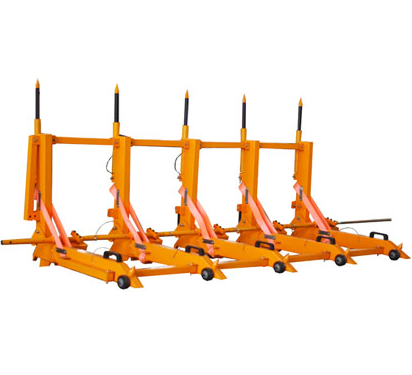Modular vehicle barriers play a critical role in enhancing safety and security in various settings, including construction sites, event venues, and high-security zones. Selecting the right modular barrier system ensures optimal performance, durability, and cost-effectiveness. This guide provides six essential tips to help you choose the best modular vehicle barriers for your needs.
1. Understand Your Security Needs
Before selecting a modular vehicle barrier, evaluate your specific requirements. Consider the following:
– **Purpose:** Are you using the barriers for traffic control, pedestrian safety, or security against potential vehicle threats?
– **Location:** Determine whether the barriers will be installed permanently or used temporarily for events.
– **Threat Level:** For high-security areas, opt for barriers designed to withstand impacts from vehicles of varying sizes and speeds.
Clearly defining your needs ensures you choose barriers that meet the intended objectives effectively.
2. Assess Barrier Durability and Materials
The durability of modular vehicle barriers depends largely on the materials used. Look for options that can withstand harsh weather conditions and regular wear and tear. Common materials include:
– **Steel or Reinforced Concrete:** Ideal for high-security and impact-resistant applications.
– **High-Density Polyethylene (HDPE):** Lightweight, portable, and suitable for temporary or low-security applications.
Choose materials based on the intended use, expected lifespan, and environmental conditions.
Modular Vehicle Barrier
3. Evaluate Ease of Installation and Portability
Modular barriers are often preferred for their flexibility and ease of installation. When evaluating options, consider:
– **Quick Assembly:** Barriers with interlocking systems or simple setups save time and labor costs.
– **Portability:** Lightweight and stackable barriers are easier to transport and reposition, making them ideal for dynamic environments.
Ensure the system can be deployed efficiently, especially in temporary or emergency scenarios.
4. Check Compliance with Standards
Safety and performance standards are crucial for vehicle barriers. Verify that the barriers comply with relevant certifications and regulations, such as:
– **PAS 68 or ASTM F2656:** Impact resistance standards for hostile vehicle mitigation.
– **NCHRP 350 or MASH:** Guidelines for crashworthiness in traffic control applications.
Compliance ensures the barriers meet industry benchmarks for safety and effectiveness.
5. Consider Customization Options
Many suppliers offer customizable modular vehicle barriers to suit specific needs. Features to consider include:
– **Colors and Reflective Markings:** Enhances visibility for traffic management.
– **Add-ons:** Options like integrated gates, lighting systems, or signage for multifunctional use.
– **Scalability:** Modular designs allow you to expand the system as needed.
Customization ensures the barriers align with your operational and aesthetic requirements.
6. Compare Costs and Long-Term Value
While cost is a significant factor, it’s essential to consider the long-term value of the barriers. Evaluate:
– **Initial Costs:** Include purchase price, installation fees, and transport costs.
– **Maintenance:** Opt for barriers with low maintenance needs to reduce ongoing expenses.
– **Lifespan:** Durable systems may have higher upfront costs but offer better value over time.
Invest in quality barriers that provide durability and functionality while staying within your budget.
FAQs About Modular Vehicle Barriers
Q1: What are modular vehicle barriers used for?
A: Modular vehicle barriers are used for traffic control, pedestrian protection, and mitigating potential vehicle threats in high-security zones.
Q2: Can modular barriers be relocated?
A: Yes, many modular barriers are designed to be portable and can be easily relocated as needed.
Q3: Are modular barriers suitable for temporary events?
A: Absolutely. Lightweight and easy-to-assemble barriers are ideal for temporary or short-term applications like events and construction projects.
Q4: How do I ensure the barriers are crash-rated?
A: Look for certifications like PAS 68, ASTM F2656, or MASH to ensure the barriers meet impact resistance standards.
Q5: What is the lifespan of modular vehicle barriers?
A: The lifespan depends on the materials and usage but can range from several years for lightweight models to decades for heavy-duty barriers.
Conclusion
Choosing the right modular vehicle barriers involves careful consideration of your security needs, material durability, installation ease, compliance, customization, and cost-effectiveness. By following these six tips, you can ensure a reliable and efficient barrier system that meets your requirements and enhances safety and security in your chosen environment.


